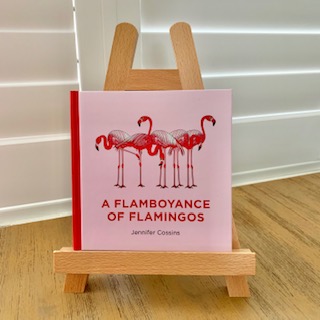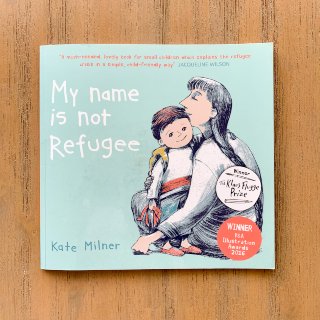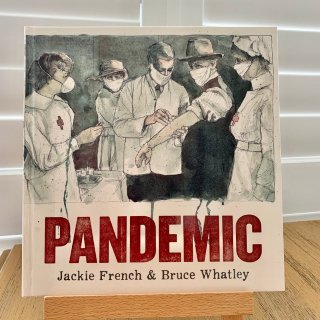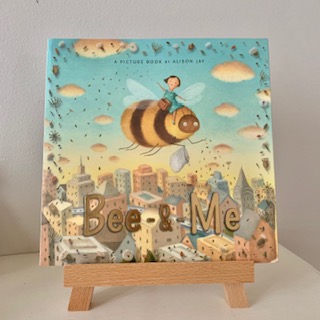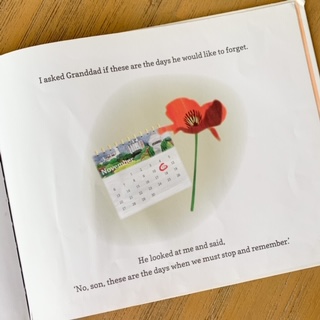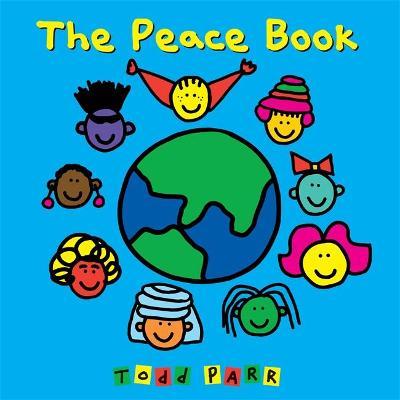Grandma’s Treasured Shoes
Free lesson plan, writing template and printable word-search puzzles for kids
Best suited to:
K – Year 6
KLAs covered:
English (adjectives, rhyming words, adjectival phrases), Australian history (immigration), PDH (empathy), geography (places are different)
Learning:
- who are refugees?
- why do people leave their countries and become refugees?
- Australia has been welcoming refugees from different countries for over 170 years, including Jewish people who left Nazi Germany in the 1930s;
- many Vietnamese people fled their country after 1975 to seek safety in Australia. Those people have grown up in Australia and have had their own families here but still remember their homeland and how it felt to be a refugee;
- remembering important events and times in our lives: how physical items can hold memories that matter to us;
Need to know:
- a 2019 publication written and illustrated by Australians;
- a great introduction to the concept of refugees for young children, with simple, bright illustrations;
- aimed at children up to the age of about nine but also a wonderful text for older children and for adults;
- tells the story of Grandma’s journey from her home country, wearing her roaming shoes and weary shoes, on a boat with her salty but free shoes and into her new life where she wears lots of different kinds of shoes;
- features rhythmic text and lots of rhyming words, adjectives and adjectival phrases to describe the shoes;
- includes a short fact section at the back which contains historical photographs introducing children to the definition of a refugee and the history of Australian immigration;
- a great books for teaching younger children about adjectives and for exploring unusual and creative adjectives with Years 3-6;
- read slowly to allow the children to enjoy the rhythm of the text;
- great for exploring rhyming words;
Discussion Questions (before reading):
- read the title and discuss the cover: what do you see on the cover? What do you think this story will be about? What do you see that makes you think that?
- write these words on the classroom whiteboard: treasured, oodles, flee;
- ask the children what they think the word treasured means and briefly discuss;
- ask the children if they know what the word oodles means (it means lots and lots);
- ask the children if they know what the word flee means and explain the past tense is fled;
- K – Year 2: have a brief discussion about shoes: what kind of shoes do we have? Do we have different shoes for different activities?
Discussion Questions (after reading):
- ask the children what they thought about the book. Did they enjoy it? Why or why not?
- ask the children to tell you, in their own words, what the story was about;
- why do you think the author chose to tell the story about how Grandma came to Australia by telling a story about her shoes?
- if the word refugee is not mentioned, ask the children if they know the word we usually use to describe someone who has to leave their home and travel to live in another country because they are in danger;
- ask the children how they think Grandma felt when she was a little girl and had to leave her home. How might you feel if you suddenly had to leave your home, your pets, your school, your friends, etc? Invite the children to close their eyes and imagine leaving their homes and not knowing where they will go. Write the emotion words given by the children on the classroom whiteboard;
- K – Year 2: show the children the photos in the back of the book of Vietnamese refugees. Read and summarise some of the text, as appropriate. Tell the children that Grandmas’ Treasured Shoes is a story about these refugees and how they came to Australia;
- Years 3 – 6: read and discuss the pages at the back of the book headed ‘Australia’s Refugees’. Tell the children that Grandmas’ Treasured Shoes is a story about these refugees and how they came to Australia. The picture book itself and the section ‘Australia’s Refugees’ essentially tell the same story – the story of refugees fleeing their home land and settling in Australia. The two texts have different purposes and are written in different ways. As a class, discuss how the texts are different, their purposes and the effect each one has on the audience;
Activities
- children write and/or draw their response to the story;
- children complete a wordsearch using vocabulary from the story;
- children use the vocabulary in the wordsearch to write sentences about what happened in the story;
- children write about how they think Grandma might have felt when she was a little girl who had to leave her country, friends, etc, using the emotion words on the classroom whiteboard;
- children write a sentence or two about how they would feel if they had to leave their homes and become refugees;
- English – sequencing activity: children retell the story using the format: first … then … next … finally …
- English – rhyming words activity: make a list of the rhyming words in the story and match them with their rhyming partner. Children can copy the words from the class whiteboard and write them in their books or you can use the matching words template (coming soon);
- ask the children to think and tell the class about the different types of shoes they have (not how many pairs). Where/why do they wear certain shoes? Do they have favourites? Why are these their favourite shoes? What are some of the things their shoes do when they are wearing them? (record responses on the classroom whiteboard). Children draw a picture of their favourite shoes, showing and/or writing about where they wear them and what they do while wearing them. Encourage them to use a conventional adjective to describe their shoes (My sparkly shoes) or to make up their own adjective or adjectival phrase (My going on holiday shoes);
- geography – places are different: look for Vietnam on the classroom globe or on a world map. Discuss how people in Australia have come from many different countries to live here. Invite children to share their experiences of coming to live in Australia from a different country. Find those countries on the map/globe and show children how far they are from Australia. What are the similarities and difference between life in the other country and the children’s lives in Australia? Children can also share their experiences of travelling to another country;
- English – speaking and listening: why do people keep and treasure certain items? If you are with the class for more than one day, invite them to bring a special family object (or a photo of it) to show the class. Tell the children that, in the story, Grandma keeps her treasured shoes to remind her of her experiences when she was a child. The children can share their objects with the class, explaining what it reminds them of or why it is special to them/their family;
- maths – data collection and graphing: after discussing the children’s favourite shoes, make a vertical list on the classroom whiteboard of the types of shoes most often mentioned (if there are too many, group the least popular under an ‘other’ heading). Ask the children to raise their hands as you read out each option and make tally marks next to each one. Check that everyone has nominated a favourite by counting the tally marks and checking them against the number of children in the class. Create a graph together on the whiteboard showing this data. Give younger children a small piece of paper (approx 6cm x 6cm) to draw their favourite shoes and create a class pictograph using blu-tac to place the pictures on the whiteboard. With Year 3 and up, create a bar graph together on the whiteboard to show the data. Discuss using mathematical language appropriate to the children’s age: data, category, display, information, tally marks, etc. Graphs can be copied into their maths books if you wish;
- English – adjectives, personification: write some of the adjectives from the story on the classroom whiteboard, ensuring you list a mix of conventional adjectives (muddy, new, ballet) and more creative adjectives (trembling, weary, fearful). Ask the children what they notice about the adjectives. Lead a discussion about the author’s adjective choices and the effect of these on the text (adjectival phrases and adjectives which personify shoes make the text more interesting, create an emotional response and help us empathise with the little girl Grandma was);
Years 3 – 6:
- children imagine they are a refugee child and write a letter to a friend about their experiences. They include one thing that’s important to them: a piece of clothing or a small toy they’ve been able to take with them;
- children draw their favourite pair of shoes. As they draw they think about and write down adjectives which describe their shoes and the activities they do while wearing their shoes. Encourage them to think of, perhaps, 10 adjectives. Bring the class back together and discuss the page in the book which reads: ‘They’re old shoes, Frail shoes, Dusty and pale shoes.’ Read it aloud several times, slowly, so children can tune in to the rhythm and rhyme of the text. Children then write about their own shoes, using their adjectives and the format of this page: ‘They’re _______ shoes, _______ shoes, _______ and _______ shoes.’ For example: They’re happy shoes, running shoes, playing and jumping shoes.
Years 5 – 6 Research Activity (computers required):
After reading the section at the back of the book about refugees, reiterate that refugees are usually fleeing war (including civil war) or other conflict or the results of war in their countries (ask the children if they know what a civil war is and briefly discuss). For this reason, there have been times when large numbers of refugees have come to Australia from particular countries:
- Jewish people from Germany when the Nazi party was taking over (1933-1939);
- European migrants after World War II;
- Vietnamese people after the Vietnam War ended in 1975;
- Afghan people in the 1990s and beyond because of the on-going war in Afghanistan;
- Syrian people since 2011 when the Syrian civil war started;
- Tamil refugees from Sri Lanka since 2015 when the Sri Lankan civil war escalated;
- Somali refugees, beginning in the early 1990s as a result of the Somalian civil war;
As a class, discuss why countries need an immigration policy and what problems/fears Australians (and people in other countries) might have about accepting people as refugees. Do you think these fears are valid? Do you think we should accept refugees into Australia? Why or why not? Under what circumstances do you think we should accept them? Does it matter which country they come from?
Children work in groups with computers to research one of the groups of refugees in the list above. They should aim to answer these questions:
- when/during which years did most of these refugees come to Australia? Why?
- why these people become refugees? What were they escaping/fleeing? What did they fear might happen to them?
- how did the refugees come to Australia and what happened when they arrived here?
- what are some of the challenges the refugees faced when they had to make new lives for themselves in Australia?
Websites for Research
Clips about refugees and migrants to watch as a class:
European Migrants after World War II
Conditions in Germany and Europe after World War II (4 mins):
https://www.britannica.com/video/180256/Millions-refugees-Europe-West-World-War-II
Afghani Refugees
Tamil Refugees from Sri Lanka
Vietnamese Refugees
Syrian Refugees
Somali, Gahanian and Sudanese Refugees
Your free, printable word-search puzzles and writing template
These free, printable word-search puzzles for kids are great for building and reinforcing the vocabulary used when discussing Grandma’s Treasured Shoes. They’re especially helpful for EAL/D students.
There are three different puzzles in this file to enable you to differentiate the activity according to the learning needs of your students.
Download and print our free writing template for use with the picture book Grandma’s Treasured Shoes here (PDF).


